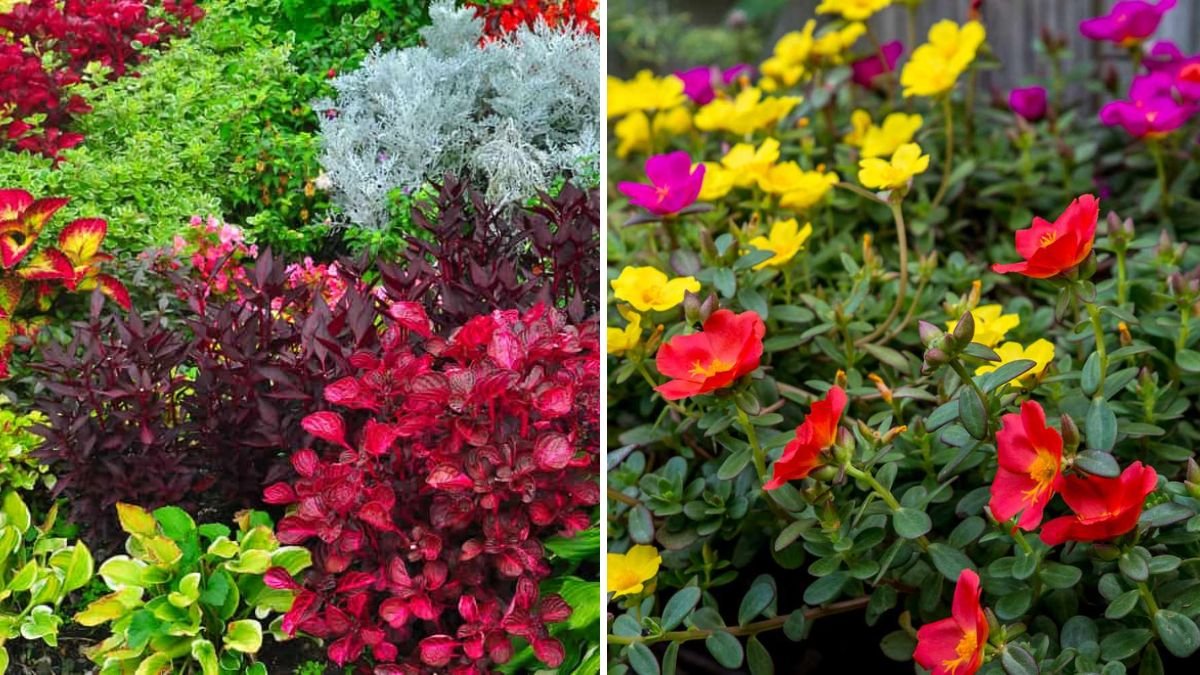A vibrant garden that blooms throughout the year is every gardener’s dream. Achieving continuous color requires strategic planning, plant selection, and thoughtful design. One of the most effective ways to ensure a garden remains lively in every season is by mixing annuals and perennials. Annuals provide bursts of color for a single growing season, while perennials offer structure, texture, and recurring blooms year after year. By combining these two groups, gardeners can create dynamic, layered gardens that are visually stunning and low-maintenance.
This guide explores the benefits, plant selection strategies, planting techniques, seasonal planning, and maintenance tips for successfully combining annuals and perennials for year-round color.
Why Mix Annuals and Perennials?
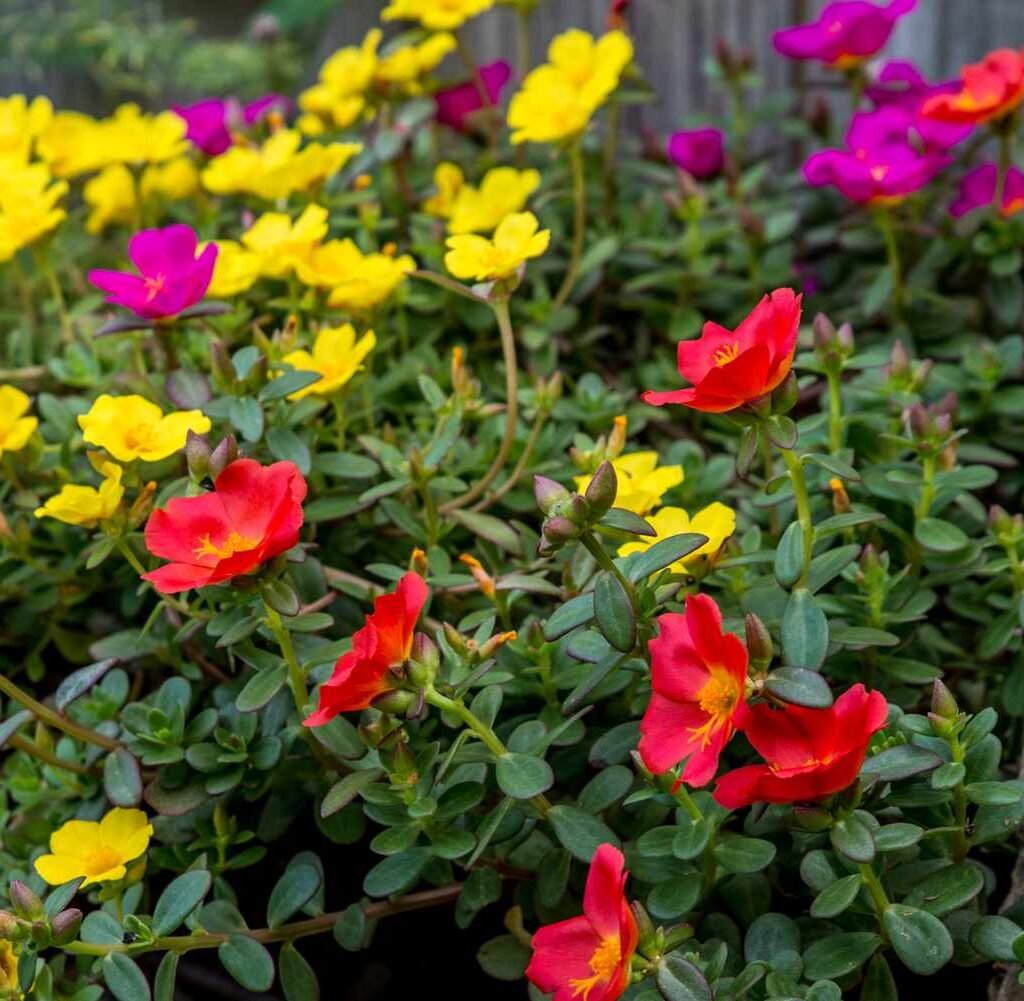
Mixing annuals and perennials offers multiple advantages:
- Continuous Blooms: Annuals provide vibrant colors when perennials are not flowering.
- Structural Interest: Perennials add height, texture, and foliage interest year-round.
- Seasonal Flexibility: Adjust annual plantings each year to introduce new colors and trends.
- Low Maintenance: Perennials form a permanent backbone, reducing annual replanting requirements.
- Wildlife Support: A mix of flowers attracts pollinators like bees, butterflies, and hummingbirds.
Combining these plant types ensures a garden that is never dull, regardless of the season.
Step 1: Understanding Annuals and Perennials
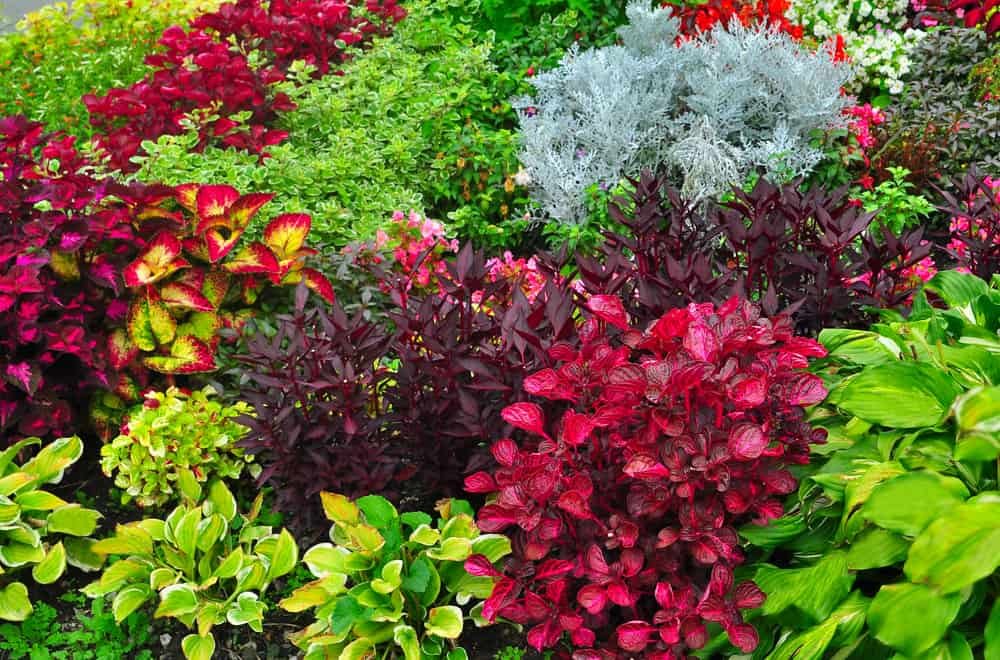
Annuals complete their life cycle in one growing season. They are typically planted in spring or summer and provide instant color and variety. Examples include:
- Petunias
- Marigolds
- Zinnias
- Impatiens
- Cosmos
Perennials live for multiple years, often dying back in winter and re-emerging in spring. They provide structure and consistency. Examples include:
- Daylilies
- Coneflowers
- Hostas
- Lavender
- Hellebores
By understanding the characteristics of each group, gardeners can plan for blooms, foliage texture, and seasonal color gaps.
Step 2: Planning for Year-Round Color
Effective planning is crucial:
- Assess Light and Soil: Determine sun exposure, soil type, and drainage. Annuals and perennials may have different requirements.
- Seasonal Blooms: Choose plants with staggered bloom times to maintain continuous color. For example, hellebores bloom in winter/early spring, tulips in spring, coneflowers in summer, and asters in fall.
- Height and Texture: Plant taller perennials in the back of beds and shorter annuals in the front to create layers and depth.
- Color Coordination: Select complementary or contrasting colors for a visually harmonious display.
A thoughtful plan ensures no gaps in color and continuous visual appeal throughout the year.
Step 3: Selecting Annuals for Seasonal Impact
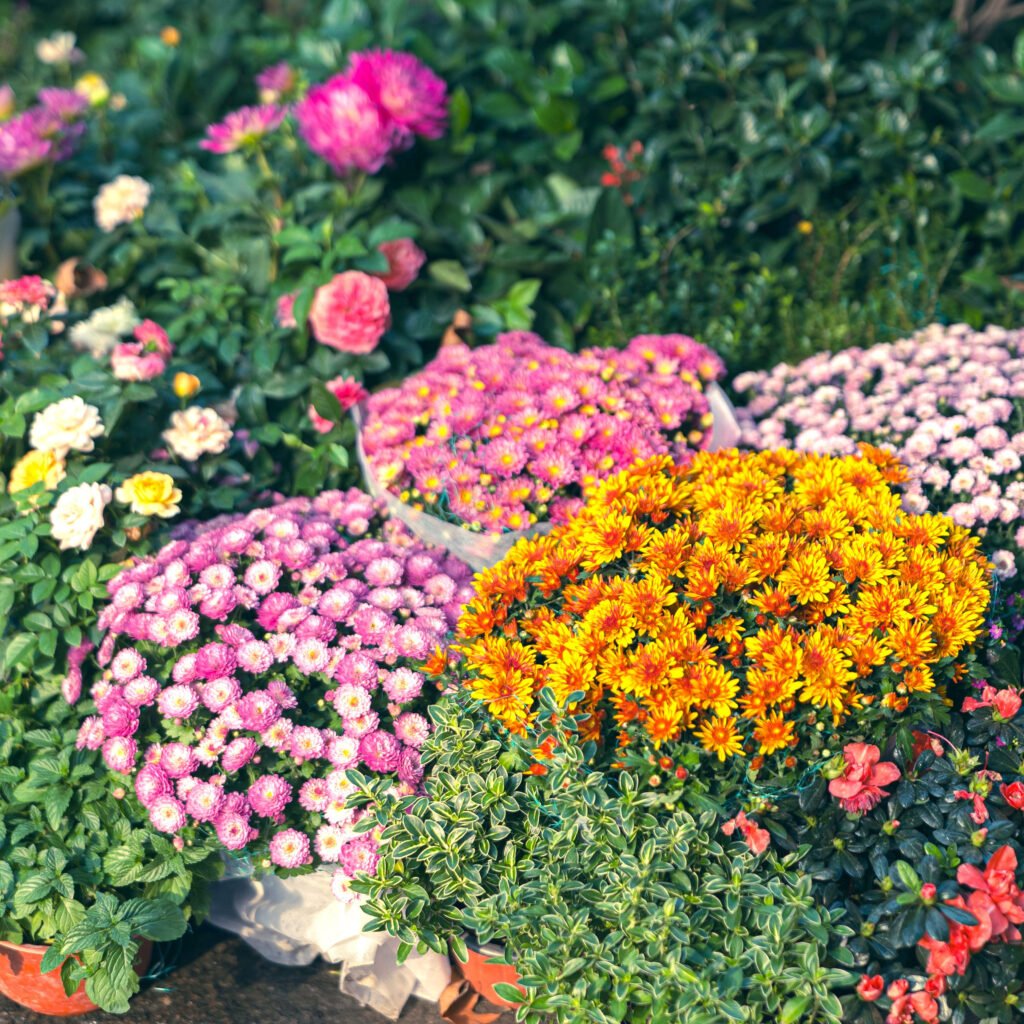
Annuals offer flexibility and instant gratification:
- Spring Annuals: Pansies, primroses, and snapdragons bring color after winter.
- Summer Annuals: Marigolds, zinnias, and petunias provide intense summer color.
- Fall Annuals: Chrysanthemums and ornamental kale extend blooming into cooler months.
- Colorful Foliage Annuals: Coleus or caladiums add texture and visual interest even when flowers fade.
Annuals fill gaps between perennial blooms and allow gardeners to experiment with new colors each year.
Step 4: Choosing Perennials for Structure and Longevity
Perennials create the backbone of a garden, providing year-to-year stability:
- Early Bloomers: Hellebores, bleeding hearts, and dwarf irises bring early spring color.
- Summer Stalwarts: Coneflowers, daylilies, and coreopsis produce vibrant summer flowers.
- Fall Favorites: Sedums, asters, and ornamental grasses ensure color in late seasons.
- Evergreen Foliage: Hostas, ferns, and boxwoods maintain interest during dormant periods.
Perennials reduce the need for replanting and provide consistent texture across seasons.
Step 5: Designing Mixed Plant Beds
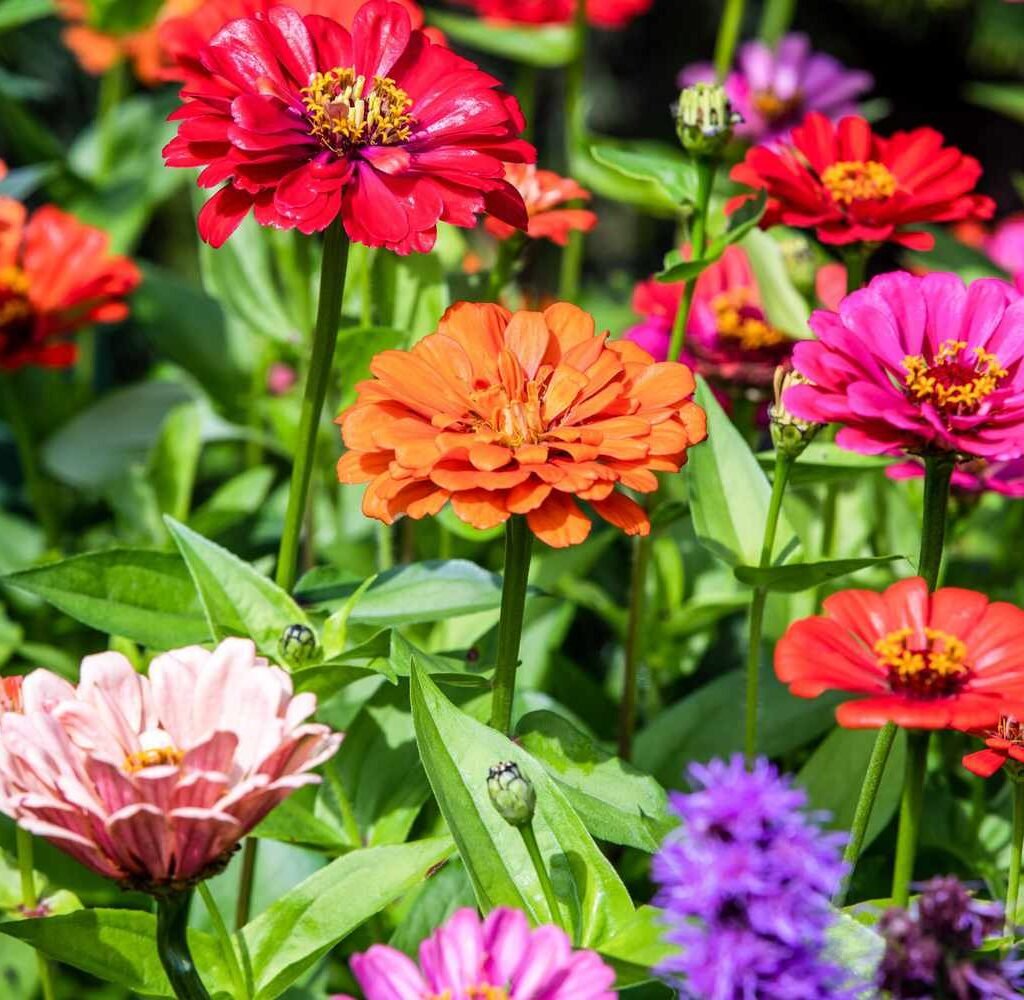
When combining annuals and perennials:
- Layer by Height: Place tall perennials at the back, mid-height in the middle, and low-growing annuals at the front.
- Use Groupings: Plant in clumps or drifts for natural flow and impact rather than scattering individual plants.
- Color Repetition: Repeat colors across the bed to unify the design.
- Seasonal Pockets: Include small clusters of seasonal annuals among perennials to cover gaps when perennials aren’t blooming.
- Foliage Texture: Mix leaf shapes, sizes, and colors for added depth and interest beyond blooms.
This approach creates a balanced, dynamic garden that is visually appealing in every season.
Step 6: Container Gardens and Balcony Displays
Mixing annuals and perennials isn’t limited to ground beds; containers are perfect for:
- Seasonal Swaps: Replace annuals each season while keeping perennials as permanent anchors.
- Compact Spaces: Perfect for balconies, patios, or terraces where space is limited.
- Color Coordination: Containers allow experimentation with bolder color combinations that might be harder to achieve in large beds.
Container planting provides flexibility and ensures continuous color even in small urban spaces.
Step 7: Soil Preparation and Fertilization
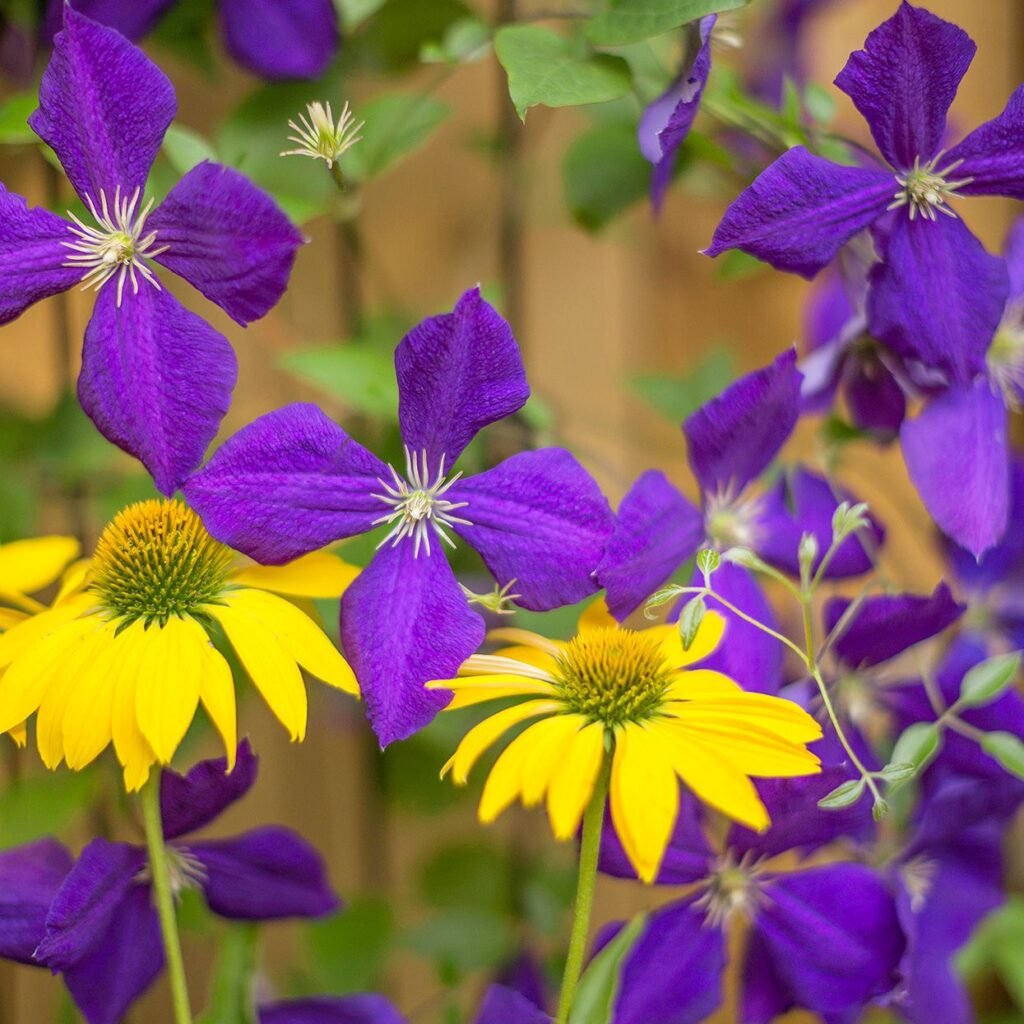
Healthy soil is critical for continuous blooms:
- Soil Enrichment: Mix compost or well-rotted manure into garden beds.
- pH Balance: Aim for slightly acidic to neutral soil (pH 6–7) for most flowering plants.
- Fertilization: Use slow-release fertilizer for perennials and supplemental liquid fertilizer for annuals during active bloom periods.
- Mulching: Apply mulch to retain moisture, reduce weeds, and regulate soil temperature.
Proper soil preparation supports robust root systems and abundant flowering.
Step 8: Watering Techniques
Watering needs vary between annuals and perennials:
- Consistency: Keep soil evenly moist, especially during hot, dry periods.
- Avoid Waterlogging: Ensure proper drainage to prevent root rot in both perennials and annuals.
- Deep Watering: Encourage deep root growth in perennials by watering thoroughly but less frequently.
- Containers: Water more frequently in pots as they dry faster than garden beds.
Effective watering prevents stress, supports bloom production, and maintains healthy foliage.
Step 9: Maintenance for Year-Round Color
Regular maintenance keeps mixed beds thriving:
- Deadheading: Remove spent flowers from annuals and perennials to encourage new blooms.
- Pruning: Trim perennials as needed to maintain shape and prevent overcrowding.
- Division: Divide overcrowded perennials every 2–3 years to rejuvenate growth.
- Pest Control: Monitor for aphids, snails, slugs, and fungal diseases; use organic or chemical solutions carefully.
- Seasonal Adjustments: Rotate or replace annuals to fill seasonal gaps.
Consistent care ensures long-lasting color and a healthy, balanced garden.
Step 10: Seasonal Planning for Continuous Bloom
- Spring: Early perennials like hellebores and annual pansies add color after winter.
- Summer: Mix in zinnias, petunias, and mid-season perennials like daylilies.
- Fall: Add chrysanthemums, ornamental kale, and asters for late-season color.
- Winter (Mild Climates): Evergreen perennials like heucheras or boxwoods maintain visual interest.
Strategic seasonal planning creates a seamless transition of color throughout the year, ensuring your garden never looks bare.
Additional Tips for Success
- Record Keeping: Maintain a journal of bloom times to plan future plantings.
- Experiment with Color Schemes: Try monochromatic, complementary, or analogous palettes to see what works best.
- Wildlife-Friendly Gardens: Include plants that attract pollinators to enhance garden ecology.
- Edge Planting: Use annuals along pathways or balcony edges for vibrant borders.
- Succession Planting: Plant in stages to maintain uninterrupted bloom.
These tips enhance aesthetic appeal and ensure continuous color while supporting ecological balance.
Conclusion
Mixing annuals and perennials is a proven strategy for achieving year-round color, dynamic texture, and continuous garden interest. Annuals provide bursts of color and flexibility for seasonal trends, while perennials offer structure, long-term stability, and recurring blooms. By carefully selecting plant varieties, planning for bloom times, preparing soil, providing proper care, and maintaining consistent seasonal management, gardeners can create stunning gardens that are visually appealing throughout the year.
Whether in garden beds, balcony containers, or raised planters, the synergy of annuals and perennials transforms spaces into vibrant, ever-changing landscapes. Thoughtful design, attentive maintenance, and strategic planting ensure that your garden remains lively, beautiful, and full of life in every season, delighting both humans and pollinators alike.
